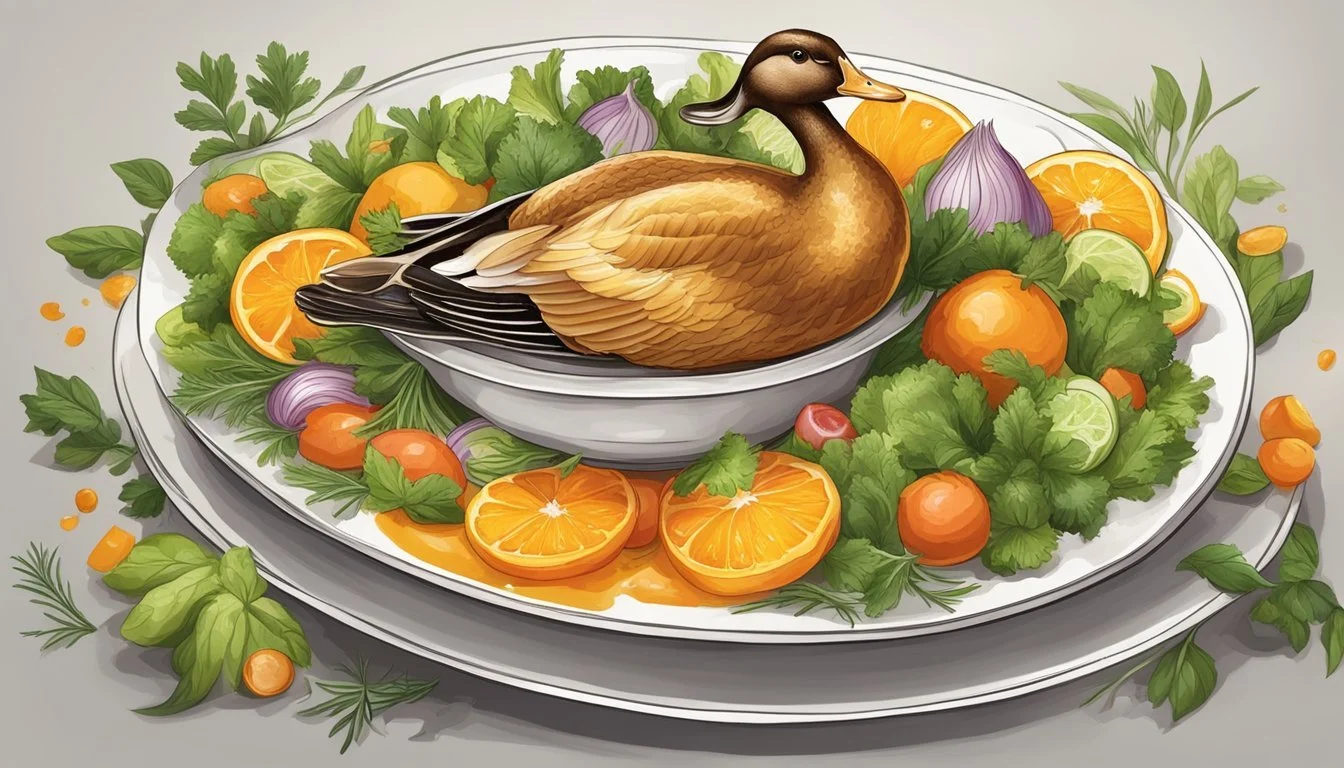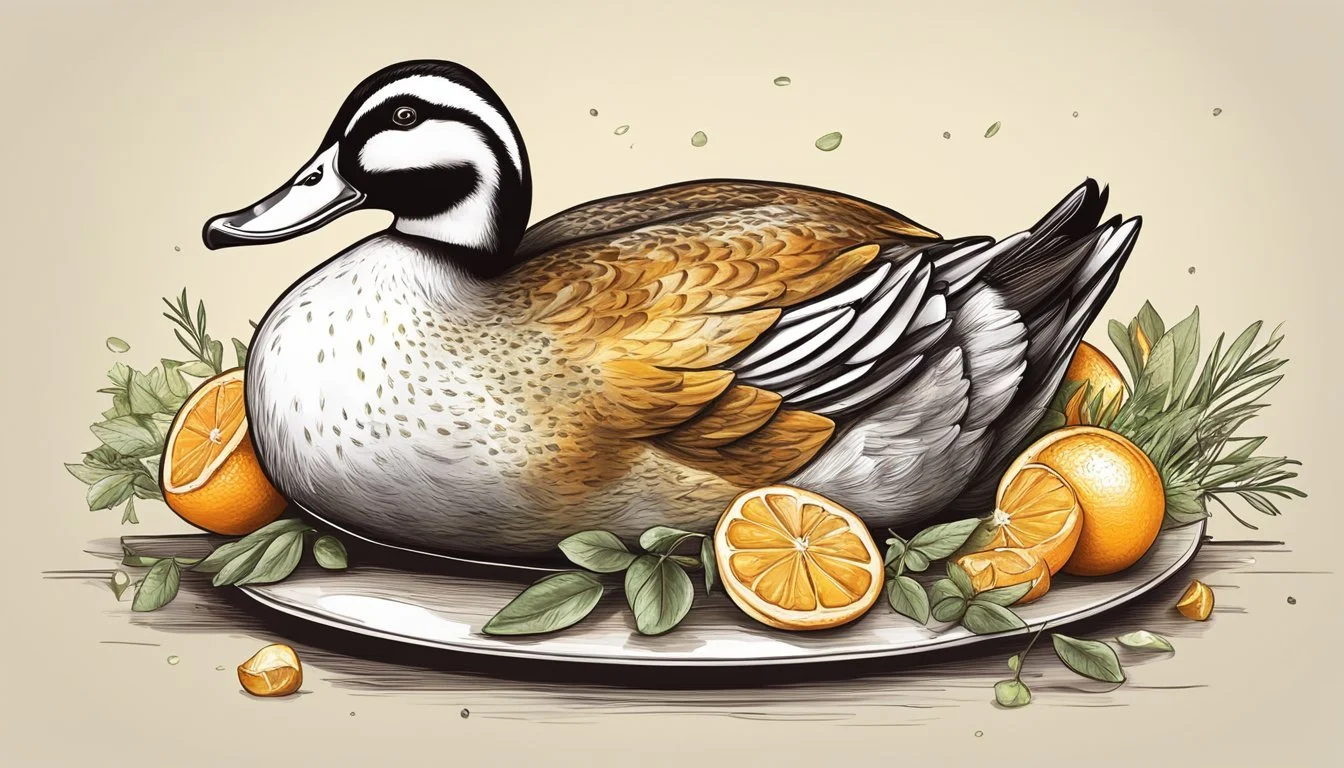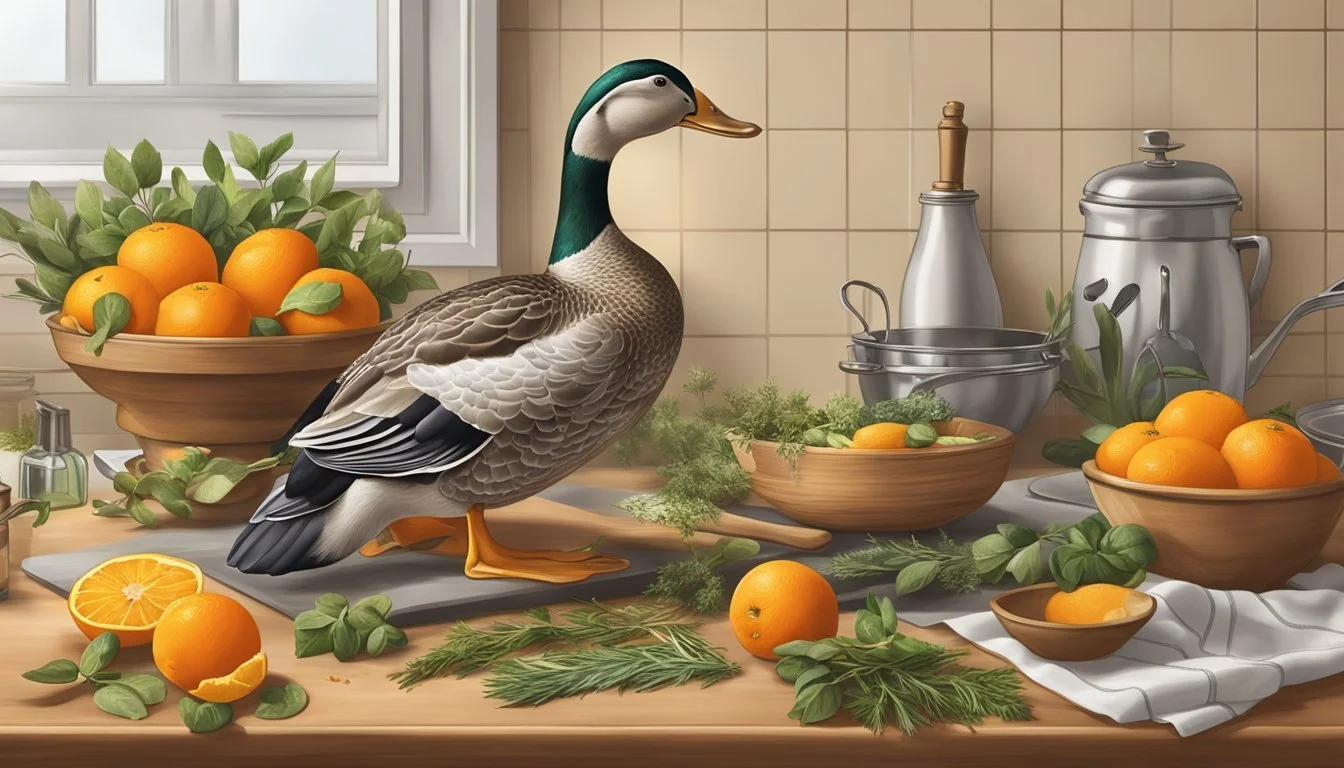Is Duck a l'Orange Gluten-Free?
Unveiling Dietary Facts
Duck (What wine goes well with duck?) à l'orange is a classic French dish that traditionally combines roasted duck with a sweet and tangy orange sauce. The key to determining whether duck à l'orange is gluten-free lies in the ingredients used for both the duck and the accompanying sauce. Typically, the duck itself is naturally gluten-free as it is simply meat. However, it is the preparation and cooking methods that may introduce gluten through the use of certain stocks, marinades, or breading.
The sauce, which is integral to the dish, often requires more scrutinized attention for those adhering to a gluten-free diet. Classic orange sauce ingredients might include a reduction of sugar, vinegar, and orange juice thickened with a roux or cornstarch. Cornflour, when used as a thickening agent, is gluten-free, whereas flours derived from wheat contain gluten. To ensure a gluten-free version of the sauce, all components must be verified as gluten-free, including any chicken stock, soy sauce, and other additives.
When dining out or purchasing pre-made duck à l'orange, it is crucial for individuals with gluten sensitivities or celiac disease to inquire about the preparation methods and ingredients. For home cooks wishing to make duck à l'orange gluten-free, they must select gluten-free labeled components and substitutes for any ingredients that traditionally contain gluten. By doing so, they can enjoy this exquisite dish without compromising their dietary restrictions.
Understanding Duck à l'Orange
Duck à l'Orange combines the richness of duck with the citrus flavors of orange, creating a distinctive dish. This section explores the history, culinary characteristics, ingredients, and nutritional values of this classic French dish.
Historical Significance
The dish known as Duck à l'Orange emerged in the 19th century. Though variations existed, the recipe titled "Ducklings à la Bigarade" captured its essence with a sauce made from bitter oranges. It has since become a culinary staple, embodying French cuisine's elegance.
Culinary Profile
Duck à l'Orange features a savory duck complemented by a sweet and tangy orange sauce. The contrast of flavors—rich duck meat with the acidity of the orange—makes it a refined yet refreshing dish. A particular twist to the recipe by Julia Child, a chef who popularized French cooking in America, includes the addition of Grand Marnier to the sauce, adding a subtle note of complexity.
Dietary Considerations
Concerning dietary restrictions, whether Duck à l'Orange is gluten-free depends on the sauce preparation. Traditional recipes may include ingredients containing gluten, but alternatives are available. For a gluten-free variant, thickeners such as cornstarch can replace flour-based products.
Key Ingredients
The core components of Duck à l'Orange are:
Duck: The mainstay of the dish.
Orange Juice and Zest: For the sauce's citrus character.
Sugar: To balance acidity with sweetness.
Butter: Often used to enrich the sauce.
To modify the sauce for a gluten-free diet, one might use:
Cornstarch or Arrowroot: As gluten-free thickening agents.
Nutritional Information
Per serving, Duck à l'Orange typically contains:
Calories: Varies depending on portion size and recipe specifics.
Carbohydrates: Influenced by the amount of sugar and thickening agents used.
Fiber: Minimal, as the dish is meat-centric with a focus on sauce.
Protein: High, due to the duck.
Fat: Substantial, originating from both the duck and added butter.
Sodium: Can be significant, as seasoning is critical for flavor.
Cholesterol: Present from the duck meat.
Vitamin C and Potassium: Provided by the orange components in the sauce.
Preparation Fundamentals
To create a gluten-free version of Duck à l'Orange, meticulous attention to ingredient selection and cooking processes is paramount. Ensuring gluten-free ingredients and understanding the culinary techniques involved are critical for a successful dish.
Choosing the Right Duck
Selecting a whole duck is ideal for a traditional presentation. For a smaller gathering, duck breasts may suffice. Ensure that the duck is fresh and, if possible, organic to guarantee the best flavor and quality.
Preparing the Duck
Whole duck prep includes removing innards, rinsing thoroughly, and patting dry. Scoring the duck skin in a crisscross pattern contributes to the crispiness of the skin and allows fat to render effectively during cooking.
Duck Cooking Techniques
Properly cooking duck is crucial; it should reach a medium-rare level or a safe internal temperature as read by a thermometer. For a whole duck, roasting in an oven is the standard method, typically at a high temperature initially, then reduced to cook through.
Making Orange Sauce
A classic orange sauce combines orange juice, orange liqueur (like Grand Marnier, which is gluten-free), stock, and sugar. To make it gluten-free, use cornflour instead of traditional flour to thicken the sauce. Finish the sauce with a knob of butter for richness.
Gluten-Free Alternatives
In every step, from stock to orange liqueur, verify that ingredients are labeled gluten-free. Consider using a certified gluten-free soy sauce if required. Cross-contamination is a risk in non-gluten-free kitchens, so strict kitchen hygiene is essential.
Assembling the Dish
Once the duck is cooked and rested, transfer it to a serving platter. Slice the duck if preferred. Spoon the gluten-free orange sauce liberally over the duck before serving. All elements should be warm to ensure maximum enjoyment of the flavors.
Serving and Presentation
Duck à l'Orange is a dish that boasts a fine balance between the richness of the duck and the citrus zest of the orange sauce. Precision in serving and presentation can significantly enhance the dining experience.
Plating Duck à l'Orange
When plating Duck à l'Orange, chefs typically start with a warm platter. They arrange slices of duck, ensuring each portion has a crispy skin top, with a garnish of fresh orange slices to heighten the citrus aroma and add a burst of color. Serving size can vary, but each portion should be ample enough to satiate, leaving room for sides.
Accompaniments
An array of accompaniments can accompany Duck à l'Orange, but the selection often leans towards items that can complement its rich flavor without overpowering it.
Potatoes: Roasted or fried, potatoes offer a textural contrast to the duck's crispiness.
Vegetables: Green vegetables like haricots verts or a light pomegranate salad add color and balance to the plate.
Mashed Potatoes: A creamy side that pairs smoothly with the succulence of the duck and the acidity of the orange sauce.
Roasted Vegetables: (What wine goes well with roasted vegetables?) A mix of roasted root vegetables can anchor the dish with earthy undertones.
Wine Pairing
The perfect wine pairing underscores the flavors of Duck à l'Orange.
Port: A small glass of rich and velvety port can echo the sweetness of the dish.
Dry White Wine: Alternatively, a crisp dry white wine cuts through the duck's richness and complements the tanginess of the sauce.
Storage and Leftovers
Properly storing duck a l'Orange ensures both safety and taste. Whether one plans to use leftovers for later meals or reserve the flavorful duck fat, the methods below highlight the best practices for storage and reuse.
Storing Cooked Duck
Once the duck has cooled, it should be placed in an airtight container. If refrigerated, it can be safely stored for 2-3 days. For longer preservation, one can freeze the duck; it is best used within 3 months to maintain optimal flavor. To freeze, wrap it tightly to prevent freezer burn.
Reusing Duck Fat
Duck fat, known for its rich flavor, can be strained and stored after cooking. In a clean, airtight container, duck fat can be refrigerated for up to 6 months. If one chooses to freeze the fat, it will remain usable for up to a year. Duck fat is ideal for roasting potatoes or searing vegetables for an added depth of flavor.
Creative Leftover Ideas
Leftover duck a l'Orange can inspire a range of dishes. Shred the meat to use in:
Salads: Toss with mixed greens, vinaigrette, and extra orange segments.
Sandwiches: Combine with mayonnaise, a touch of orange zest, and fresh herbs on artisan bread.
Transforming leftovers into new culinary creations not only reduces waste but also provides delightful meals without extra effort.





